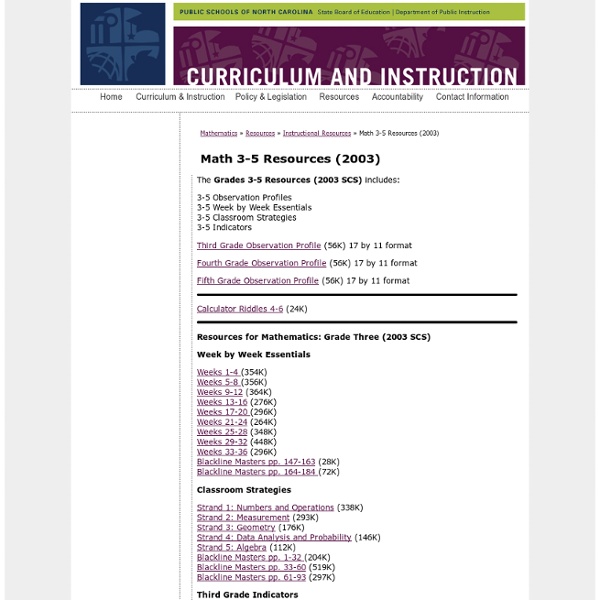



The University of Arizona - Institute for Mathematics & Education The Common Core State Standards in mathematics were built on progressions: narrative documents describing the progression of a topic across a number of grade levels, informed both by research on children's cognitive development and by the logical structure of mathematics. These documents were spliced together and then sliced into grade level standards. From that point on the work focused on refining and revising the grade level standards. The early drafts of the progressions documents no longer correspond to the current state of the standards. It is important to produce up-to-date versions of the progressions documents. This project is organizing the writing of final versions of the progressions documents for the K–12 Common Core State Standards.
illustrativemathematics Illustrated Standards Count to 100 by ones and by tens. (see illustrations) Count forward beginning from a given number within the known sequence (instead of having to begin at 1). (see illustrations) Write numbers from 0 to 20. Understand the relationship between numbers and quantities; connect counting to cardinality. When counting objects, say the number names in the standard order, pairing each object with one and only one number name and each number name with one and only one object. Understand that the last number name said tells the number of objects counted. Understand that each successive number name refers to a quantity that is one larger. Count to answer “how many?” Identify whether the number of objects in one group is greater than, less than, or equal to the number of objects in another group, e.g., by using matching and counting strategies. Compare two numbers between 1 and 10 presented as written numerals. Fluently add and subtract within 5. Recognize area as additive.
Math Play - Free Online Math Games Webcast - Beyond Slices of Pizza: Teaching Fractions Effectively This webcast, Beyond Slices of Pizza: Teaching Fractions Effectively, was coordinated by The Center on September 23, 2008. Video from the webcast Complete video from the webcast. (no longer available)Additional video interview with Denise Mewborn: Fractions are everywhere in the real world (no longer available) This webcast video was hosted by New Media, but the video is no longer available, because their video hosting contract has ended. Additional Resources About the Webcast The National Mathematics Advisory Panel, convened in 2006 by President George W. Its final report, released this spring, paid close attention to several areas of mathematics, particularly "proficiency with fractions...for such proficiency is foundational for algebra and, at the present time, seems to be severely underdeveloped." The webcast features videotaped segments from Dr. Featured Speakers Dr.
Mathematics K-5 · CCGPS Mathematics Grades K-5 · CCGPS Mathematics Glossary Third grade teachers working on unit revisions at GaDOE (June 2013) 2013-2014 CCGPS Mathematics Unit Frameworks Teacher and Student Editions of the 2013-2014 CCGPS Mathematics Unit Frameworks were posted on July 1, 2013, to GeorgiaStandards.Org and Learning Village. These unit frameworks reflect the thoughtful collaboration and dedication of mathematics teachers, coaches, and supervisors from across the state of Georgia. K-5 CCGPS Mathematics Overview The K-5 standards are organized using domains, overarching ideas that connect topics across the grades, clusters that illustrate progression of increasing complexity from grade to grade and standards which define what students should know and be able to do at each grade level. The focus in the K-5 standards is comparable to that seen in high-performing countries.
ShowMe - The Online Learning Community Math Games - from Mangahigh.com ODE - Mathematics Skip navigation Skip to main content SAFE | State Agencies | Online Services Follow Home > Academic Content Standards > Mathematics Mathematics Contact Information Mathematics Consultant (P) 614- 644-5887 ann.carlson@education.ohio.gov Mathematics Consultant (P) 614-728-2373 annika.moore@education.ohio.gov Mathematics Consultant (P) 614-387-7561 yelena.palayeva@education.ohio.gov Mathematics Consultant (P) 614-644-6814 brian.bickley@education.ohio.gov The State Board of Education has adopted the Common Core State Standards in Mathematics as part of Ohio's suite of Ohio's New Learning Standards for academic learning. Ohio's New Learning Standards Information on the College and Career Ready (Common Core) Standards. Model Curricula These mathematics Model Curricula were written by Ohio educators to support the implementation of Ohio's New Learning Standards for mathematics. In October 2013, Career Connections strategies were added to the Instructional Strategies in the model curricula.
Smarter Balanced Assessments The Smarter Balanced Assessment Consortium is developing a system of valid, reliable, and fair next-generation assessments aligned to the Common Core State Standards (CCSS) in English language arts/literacy (ELA/literacy) and mathematics for grades 3-8 and 11. The system—which includes both summative assessments for accountability purposes and optional interim assessments for instructional use—will use computer adaptive testing technologies to the greatest extent possible to provide meaningful feedback and actionable data that teachers and other educators can use to help students succeed. Smarter Balanced assessments will go beyond multiple-choice questions to include extended response and technology enhanced items, as well as performance tasks that allow students to demonstrate critical-thinking and problem-solving skills. Assessment System Components A summative assessment administered during the last 12 weeks of the school year. Summative Test Blueprints Content Specifications